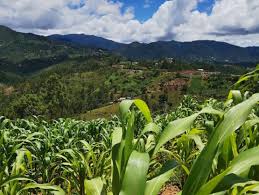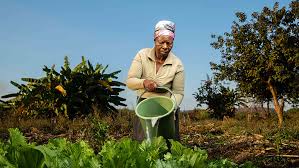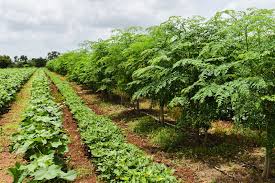A major tenet of sustainable agriculture is to mimic diversity that is commonly found in natural ecosystems but may be lost in agricultural terrain.
Biodiversity refers to the variety of plants, animals, and microorganisms above and below the soil that interact within an ecosystem. Plants and animals are consistently integrated into diverse landscapes.
As a result, these systems are typically more stable, withstanding disturbances, and recovering better than less diverse systems.
Organic cropping systems promote a diverse, balanced ecosystem as a practice to enrich the soil and prevent weed, insect pests, and disease problems.
Crop diversity, crop rotations, intercropping, cover cropping, conservation tillage, and incorporation of organic matter are all important components of farm biodiversity.
Raed Also: Blackleg (cruciferous plants): Description, Damages Caused, Control and Preventive Measures
Concept of Biodiversity on The Farm

Biodiversity is the variability among living organisms from all sources, including terrestrial, marine, and other aquatic ecosystems and the ecological complexes of which they are part; this includes diversity within species, between species, and of ecosystems.
Benefits of Encouraging Biodiversity on the Farm
1. Improves soil quality: Biodiversity enhances soil properties and microbial activities.
2. Enhances insect, weed and disease control: Diverse systems reduce pest outbreaks and disease spread.
3. Encourages beneficial organisms: Beneficial insects, birds, and microbes are supported.
4. Spreads economic risk: Crop diversity protects against price fluctuations and crop failure.
Benefits of Diverse Cropping Systems In Agriculture
1. Improves soil quality: Crop rotations improve soil, increase farm biodiversity, and boost crop yields. High-quality soils encourage dense populations of microorganisms, enhance natural biological control of pathogens, slow turnover of nutrients, encourage communities of beneficial insects, and improve soil aeration and drainage.
Crop rotations, management of crop residues, conservation tillage, incorporation of animal manures, and the use of nitrogen-fixing crops can increase soil health and productivity.
2. Breaks insect, disease, and weed cycles: Diverse plantings often decrease insect pest populations. Specialised herbivores are more likely to find and remain on pure crop stands where food sources are concentrated.
Fields containing a variety of crops are often rich in above- and below-ground beneficial organisms that naturally control insects, inhibit the growth of disease organisms, boost a crop’s natural defences, and suppress some weeds.
The use of crop diversity, crop rotations, scattered fields, adjacent uncultivated land, and a perennial crop component are methods that can be used to reduce pest pressure.
3. Encourages beneficial organisms: Planting crops that support natural enemies or directly inhibit insect attack helps to stabilise insect communities.
Spatially and temporally diverse plantings ensure that natural enemy populations are provided continuous availability of resources.
Beneficial insects can also be provided food and habitat by including areas of adjoining, uncultivated land and wild vegetation. Further, using ground covers and surface residues can enhance the abundance and efficiency of predators and parasitoids.
4. Spreads economic risk: Increasing farm diversity offers the opportunity to increase profits while decreasing production costs.
Adding new crops that fit the climate, geography, and management requirements can increase profits by providing the opportunity to exploit niche markets, expand marketing opportunities, and offset commodity price swings.
Strategies For Increasing Biodiversity On the Farm
1. Plant crop mixtures and multiple crop varieties: Encourages diversity within the field.
2. Include beneficial flowers, perennials, hedgerows or areas of uncultivated land: Supports pollinators and natural enemies.
3. Provide nesting areas for pollinators: Enhances pollination services.
4. Incorporate cover crops: Protects soil and adds organic matter.
5. Reduce tillage: Conserves soil structure and microbial life.
6. Increase organic matter: Supports soil biodiversity and nutrient cycling.
How to Increase on Farm Biodiversity Through Practical Measures

1. Diversify plant species: Increasing within-field biodiversity can be achieved through planting crop mixtures and multiple crop varieties. The establishment of diverse plantings at field margins should also be considered.
Planting strips of beneficial flowers, incorporating perennials, establishing hedgerows (a row of trees or shrubs separating fields), and leaving areas of land uncultivated are methods of increasing diversity on non-cropped land.
To increase the diversity of native pollinators, establish nest blocks and allow access to areas of soil, such as soil piles, for nesting. Branches of trees and shrubs, such as those in hedgerows, will also provide nesting sites for pollinators.
2. Crop rotation: Crop rotation refers to the sequence of crops and cover crops grown in a specific field. Rotation designs should include multiple crop families, manage short- and long-term crop fertility needs, reduce weed pressure, disrupt weed and disease cycles, and optimise crop production.
3. Intercropping: Two or more crops grown close can produce beneficial interactions. Intercropping can be achieved by growing crops in alternating rows (row intercropping), growing crops in larger alternating strips (strip intercropping).
Growing crops together with no distinct row arrangement (mixed intercropping), or by planting a second crop into a standing crop at the reproductive stage (relay intercropping).
Special attention should be given to the spatial arrangement, plant density, and expected maturity dates of selected crops.
4. Cover crops: Cover crops are used to protect the soil from erosion during times when a field is not under production. Crops that are easy to plant, establish, and control or kill should be selected.
Suitable varieties provide reliable ground cover and have no negative impact on the following crop.
It is important to evaluate the rooting depth and crop characteristics, such as weed and disease suppression, nitrogen fixation, and the attraction of pollinators and natural enemies.
Planting dates and climate requirements are also important for consideration, as suitable crops vary by geography and climatic conditions.
5. Conservation tillage: Conservation tillage requires minimal soil disturbance, keeping at least 30 percent of the soil covered by crop residue. After harvest, crop residues are left or cover crops are established until the next crop is planted.
Several methods of conservation tillage have been established. No-till planting uses specialised equipment, disturbing only a small area where the seed or transplants are set.
Strip- or zone-tillage creates a tilled seedbed 5 to 7 inches wide along the plant-rooting zone, leaving the rest of the field undisturbed. Ridge-tillage creates permanent soil ridges on top of which crops are grown.
6. Incorporation of organic matter: Increasing organic matter provides harbours for soil microbes and intensifies soil biological activity, helping to lessen the risk of disease.
The breakdown of organic matter by soil microbes returns nutrients to the soil removed during crop production. Animal manures, cover crops, crop residues, and organic amendments can be incorporated into the soil to increase organic matter content over time.
Raed Also: Blackleg (cruciferous plants): Description, Damages Caused, Control and Preventive Measures
Assessing Genetic Diversity in Natural Populations in Agriculture

The technique of gel electrophoresis enables the measurement of genetic variation in a natural population by sampling about 50 or more individuals and identifying the genotypes of each individual in respect of about 20 or more genes coding for an equivalent number of proteins or enzymes.
The frequency of heterozygotes for each gene is first determined and then the average heterozygosity for all the genes in the sample is calculated.
Several scientists working in different laboratories have measured genetic variation in several organisms using this technique. Reliable estimates of average heterozygosity are now available for more than 100 species of plants and animals.
A great deal of genetic variation is found in most natural populations of sexually reproducing organisms. On average, invertebrate organisms are heterozygous at about 13 percent of their loci.
On the other hand, vertebrates are less polymorphic, being heterozygous for about 6 percent of the loci. On average, human beings are heterozygous for about 6.7 percent of the loci. Plants, on the contrary, show a rather high degree of heterozygosity.
In addition to the enzyme or protein polymorphism, recent advances in biotechnology have enabled use of new types of polymorphisms discovered at the DNA level.
Bacterial restriction endonucleases, which cleave DNA at sequence-specific sites, break down a very long DNA molecule into small fragments.
If the variation in the DNA sequence at a particular locus is such that one of the variants is cleaved by a restriction enzyme and the other is not, then the variant that is not cleaved at that locus will be associated with a longer fragment of DNA.
This kind of sequence variation is known as Restriction Fragment Length Polymorphism (RFLP). Such markers are found in the coding as well as non-coding regions of the DNA.
They are usually biallelic and codominant so that all the three genotypes can be discriminated. Another powerful technique for generating polymorphism is that of the Polymerase Chain Reaction (PCR), which requires much less DNA to produce a detectable band on the film.
It amplifies a segment of DNA flanked by two specific sequences. It has proved useful in generating markers known as Random Amplified Polymorphic DNA (RAPD). Such markers are essentially two-allele loci with the presence of the two recognition sequences dominant to absence.
At certain loci in the genome, the variation between individuals occurs in the form of a variable number of repeats of a particular sequence of base pairs. For minisatellites or Variable Number of Tandem Repeats (VNTR), the repeat unit is of the order of 10 bp, and the number of units can be in thousands.
Microsatellites or Short Tandem Repeats (STR) or Simple Sequence Repeats (SSR) have repeat units of only 2 or 3 bp. Each of the possible numbers of repeats in VNTR or STR represents a different allele.
At each locus, therefore, a very large number of alleles can be found. The main method of detecting STR is based on PCR.
The RFLP, RAPD, and hypervariable (VNTR and STR) markers are extremely useful in linkage analysis for mapping of the mutations responsible for hundreds of Mendelian diseases.
The RFLP and RAPD markers have also been found useful in the identification of Quantitative Trait Loci (QTLs) through correlation between the trait and the marker. In plants and animals, the RFLP maps can…
Do you have any questions, suggestions, or contributions? If so, please feel free to use the comment box below to share your thoughts. We also encourage you to kindly share this information with others who might benefit from it. Since we can’t reach everyone at once, we truly appreciate your help in spreading the word. Thank you so much for your support and for sharing!

